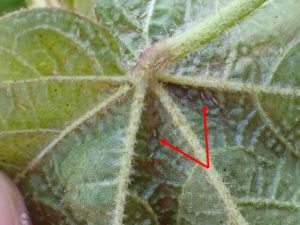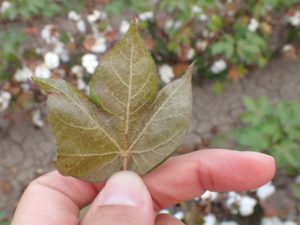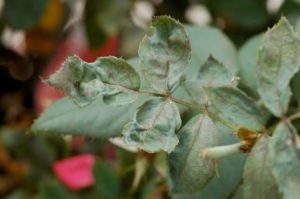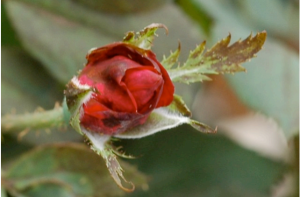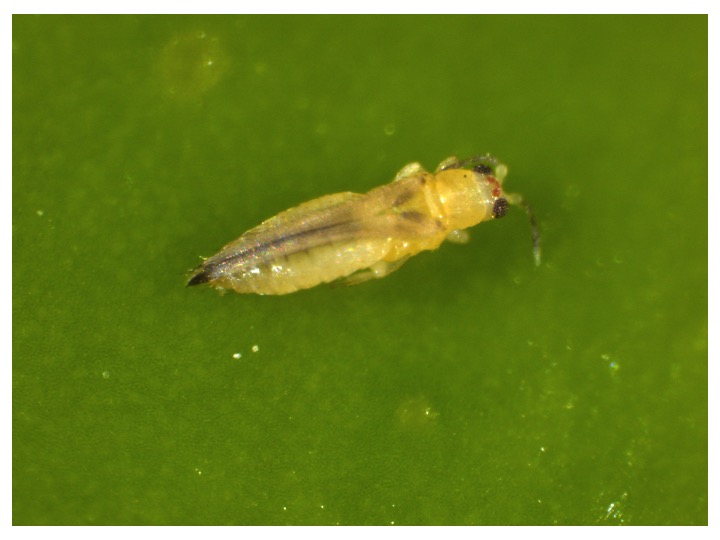
Adult chilli thrips. Photo by Dr. Mamoudou Setamou
Most recently reviewed by: Pat Porter & Extension Entomologist at Overton (2020)
Common Name(s): Chilli Thrips, Strawberry Thrips, Yellow Tea Thrips
Description
Chilli thrips, Scirtothrips dorsalis, are tiny (> 2mm long), cigar-shaped insects. The adults are pale in color with black, feathery wings and dark spots forming incomplete stripes on the top of the abdomen. Immatures, called larvae, look similar to adults but are even smaller and lack wings. Distinguishing chilli thrips from other thrips species is difficult, requires magnification, and some knowledge of insect taxonomy. Chilli thrips are most often recognized based on their behavior and the type of damage they cause.
Origin and Distribution
Chilli thrips are thought to originally come from Southeast Asia although they are now widely distributed through most of the world including India, Japan, most of Africa, much of the Caribbean and South America, and are quickly becoming established in the United States. They were first detected in Florida in 1991 and in Southeast Texas in 2005. They have been intercepted at various ports-of-entry many times on a wide range of host plants and are likely established in many landscapes from Florida to Texas. This insect has the potential to become a wide-spread pest throughout the Southern and Pacific U.S.
Habitat & Hosts
Chilli thrips are known to infest an impressively wide range of host plants, more than 225 species from at least 40 different plant families, and the list will likely continue to grow as they expand their range. Their main wild, or native, host plants are in the bean family, Fabaceae. Among other known plant hosts are numerous important crops and ornamental plants such as citrus, corn, cotton, eggplant, melon, peanut, pepper, rose, strawberry, tobacco, and tomato.
Unlike similar looking species such as the Western flower thrips, which are often found in flowers feeding on pollen, chilli thrips feed on foliage and are typically found on the undersides of leaves near the mid-vein or borders of leaves. However, when population densities are high, some individuals may be found feeding on the upper surface of leaves.
- Chilli thrips on underside of cotton leaf. Notice how they stay near the veins. Photo by Holly Davis.
- Bronzing caused by chilli thrips feeding. Photo by Holly Davis.
These insects have piercing and sucking mouthparts they use to extract material from individual epidermal plant cells. Cell death leads to a silvering or bronzing of leaves and may cause them to curl, distort and/or turn brittle and drop from the plant. Infested plants can become stunted or dwarfed. Chilli thrips tend to favor tender plant tissue, flower buds, and young fruits and vegetables although all above ground parts of plants may be attacked. Feeding on fruits leads to scarring and, in severe infestations, corky tissues. Aesthetic damage to ornamental plants can lead to extensive losses in the nursery/horticultural industry.
In addition, chilli thrips are known to vector at least seven viruses to various plants including chilli leaf curl virus, peanut necrosis virus, tobacco streak virus, melon yellow spot virus, watermelon silver mottle virus, and capsicum chlorosis virus, although there are no reports at this time that they have been vectors of any of these viruses in Texas.
- Chill thrips on rose
- Chilli thrips damage. Texas A&M AgriLife Extension
Life Cycle
Female thrips insert anywhere from 60 – 200 microscopic, kidney-shaped eggs into plant tissue on or near leaf veins, terminal plant parts and floral structures where they cannot be detected by the naked eye. Eggs will hatch in 2-7 days. There are two larval stages that look similar to the adult but are smaller and lack wings. Larvae feed for 8-10 days before entering a non-feeding pupal stage that lasts 2-3 days. The length of time it takes to complete their life cycle varies depending on temperature and host plant but ranges from 14 – 20 days. Their large reproductive capacity and quick generation time means that chilli thrips populations can increase very quickly.
Management
If you live in the State of Texas, contact your local county agent or entomologist for management information. If you live outside of Texas, contact your local extension for management options.Early detection of chilli thrips is important. Monitor for leaf silvering, bronzing or distortion, which can be mistaken for herbicide damage. To sample for thrips, tap the terminal portion of plants over a white piece of paper and examine with a hand lens or magnifying glass. In nurseries or greenhouses, yellow or blue sticky traps can be used to monitor for thrips.
Chilli thrips do have some natural enemies including minute pirate bugs (Orius sp.), lacewings, and predatory mites. While these predators may not always be able to provide adequate control of chilli thrips, it is important to preserve them by avoiding broad-spectrum insecticides such as pyrethroids and organophosphates, both of which also have a limited ability to manage chilli thrips . Biorational insecticides including horticultural oils, spinosad, and insecticidal soaps will kill larvae and adult thrips but have no residual activity so frequent application will be needed to control larvae as they emerge from eggs and/or new thrips migrate in. Products containing the conventional insecticide imidacloprid can be used as a soil drench or foliar spray and will provide control for a longer period of time with minimal impact on natural enemies. No matter what product you choose, it is important to rotate between different insecticide modes of action to reduce the risk of developing insecticide resistance.
Contributors: Scott Ludwig and Carlos Bogran
Related Publications
Chilli Thrips Control, Identification, and Management. 2016. Yan Chen, Steven Arthurs and Dennis Ring. LSUAg. Available here
Featured Creatures. Chilli Thrips. UF IFAS University of Florida. Available here
Pest Thrips of the United States: Field Identification Guide. Available here
Citations
Ananthakrishnan T. N. 1993. Bionomics of thrips. Annual Review of Entomology 38: 71-92
Chiemsombat, P., O. Gajanandana, N. Warin, R. Hongprayoon, A. Bhunchoth, P. Pongsapich. 2008. Biological and molecular characterization of tospoviruses in Thailand. Archives of Virology 153: 571-577.
Kumar, V., D. R. Seal, G. Kakkar, C. L. McKenzie, and L. S. Osborne. 2012. New tropical fruit hosts of Scirtothrips dorsalis (Thysanoptera: Thripidae) and its relative abundance on them in south Florida. Fla. Entomol. 95: 205 – 207.
Kumar, V., G. Kakkar, D. R. Seal, C. L. McKenzie, J. Colee, and L. S. Osborne. 2014. Temporal and spatial distribution of an invasive thrips species Scirtothrips dorsalis (Thysanoptera: Thripidae). Crop Protection 55: 80 – 90.
Mound, L. A., and J. M. Palmer. 1981. Identification, distribution and host plants of the pest species of Scirtothrips. (Thysanoptera: Thripidae). Bulletin of Entomological Research 71: 467-479.
Rao, R. D., V. J. Prasada, A. S. Reddy, S. V. Reddy, K. Thirumala-Devi, S. Chander Rao, V.Manoj Kumar, K. Subramaniam, T. Yellamanda Reddy, S. N. Nigam, D. V. R. Reddy. 2003. The host range of tobacco streak virus in India and transmission by thrips. Annals of Applied Biology 142: 365-368.
Reddy, D. N. R., and Puttswamy. 1983. Pest infesting chilli (Capsicum annuum L.) in the nursery. Mysore J. Agric Sci 17: 246 – 251.
Sanap, M. M., R. N. Nawale, 1987. Chemical control of chilli thrips, Scirtothrips dorsalis. Vegetable Science 14: 195 – 199.
Seal, D. R., M. Ciomperlik, M. L. Richards, W. Klassen. 2006. Distribution of the chilli thrips, Scirtothrips dorsalis Hood (Thysanoptera: Thripidae), within pepper plants and within pepper fields on St. Vincent. Florida Entomologist 89: 311-320.
Seal, D. R., W. Klassen, and V. Kumar. 2010. Biological parameters of Scirtothrips dorsalis (Thysanoptera: Thripidae) on selected hosts. Environ. Entomol. 39: 1389 – 1398.
